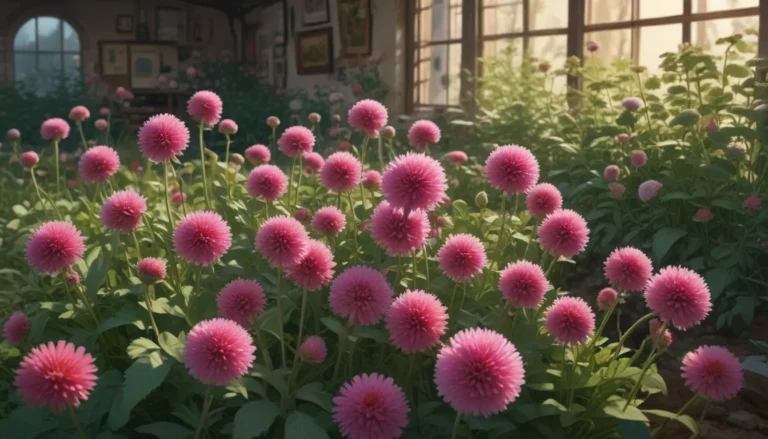Everything You Need to Know About Why Tulip Leaves Turn Yellow

Tulips are some of the most beautiful spring-blooming flowers out there, but sometimes their leaves can start to turn yellow prematurely. In this article, we’re going to dive into the nine reasons why tulip leaves may turn yellow and how you can prevent it from happening.
Understanding Tulip Cultivation
Before we get into why tulip leaves turn yellow, let’s take a quick look at the basic requirements for successful tulip cultivation. Remember, your tulips thrive in:
- USDA Hardiness Zones 3-7: Make sure your tulips are planted in an area that falls within these zones.
- Full Sun: Tulips need plenty of sunlight to grow and bloom beautifully.
- Well-Draining Soil: Plant your tulips in average soil with a pH between 6.0 and 7.0.
- Proper Planting Depth: Tulip bulbs should be planted 4 to 6 inches deep in the soil.
- Adequate Spacing: Give your tulips 2 to 6 inches of space between bulbs.
- Watering: Tulips need about an inch of moisture per week from rainfall and supplemental watering.
Understanding these basic requirements will help you set the stage for healthy tulip growth.
9 Common Reasons for Yellow Tulip Leaves
When tulip leaves start to turn yellow, it’s a sign that something isn’t quite right. Here are nine common causes of yellowing leaves and what you can do to address them:
1. Alkaline pH
If your soil is too alkaline, it can negatively impact your tulips and cause their leaves to turn yellow. Test the pH of your soil and adjust it by adding organic matter like compost or peat moss to make it more acidic.
2. Dehydration
Tulip bulbs need consistent moisture to thrive. If your tulips aren’t getting enough water, their leaves may start to turn yellow. Make sure to water your tulips regularly, especially during dry spells.
3. Disease
Moisture and heat stress can make tulip bulbs susceptible to diseases like bacterial soft rot or fungal blight. Proper spacing and healthy bulbs can help prevent disease outbreaks.
4. Inadequate Drainage
Poor soil drainage can lead to water pooling around your tulip bulbs, causing their leaves to turn yellow. Improve drainage by adding sand or compost to your soil.
5. Insufficient Sunlight
Tulips need full sun to thrive. If your tulips aren’t getting enough sunlight, their leaves may become pale green or yellow. Consider relocating shaded tulips to a sunnier spot in your garden.
6. Nutrient Deficiency
A lack of proper nutrients, such as nitrogen, can cause tulip leaves to turn yellow. Consider fertilizing your tulips with a slow-release fertilizer to provide them with the nutrients they need.
7. Oversaturation
Too much water, whether from heavy rainfall or overwatering, can lead to yellowing leaves. Improve soil drainage to prevent waterlogging around your tulip bulbs.
8. Pests
Stressed tulip bulbs are more vulnerable to pest infestations. Keep an eye out for pests like nematodes that can damage your tulip bulbs. Destroy affected plants and avoid planting in affected areas.
9. Shallow Planting
Planting your tulip bulbs too shallow can expose them to excessive heat and dryness, leading to yellow leaves. Make sure to plant your tulip bulbs at the recommended depth to protect them.
Making Adjustments for Healthy Tulips
By understanding the common reasons for yellow tulip leaves and making the right adjustments, you can ensure that your tulips thrive year after year. Here are some tips for growing healthy tulips:
- Monitor watering: Make sure your tulips get enough moisture without being oversaturated.
- Plant at the right depth: Follow the recommended planting depth and spacing for your tulip bulbs.
- Identify and treat diseases: Contact local experts if you notice signs of disease on your tulips.
- Improve drainage: Add sand or compost to your soil to improve drainage and prevent waterlogging.
- Provide proper nutrients: Fertilize your tulips as needed to ensure they get the nutrients they require.
With these adjustments and a little TLC, you can become an expert tulip grower and enjoy beautiful blooms season after season.
For more tips on growing tulips, check out these helpful guides:
- 17 of the Best Multiheaded Tulip Varieties
- How to Grow Peony Tulips in Your Garden
- How to Grow and Care for Parrot Tulips
Remember, healthy tulips start with proper care and attention to detail. By understanding the needs of your tulips and addressing any issues promptly, you can enjoy vibrant blooms year after year.
Remember, the key to healthy tulips is proper care and attention. By understanding the needs of your tulips and addressing any issues promptly, you can enjoy vibrant blooms year after year.





